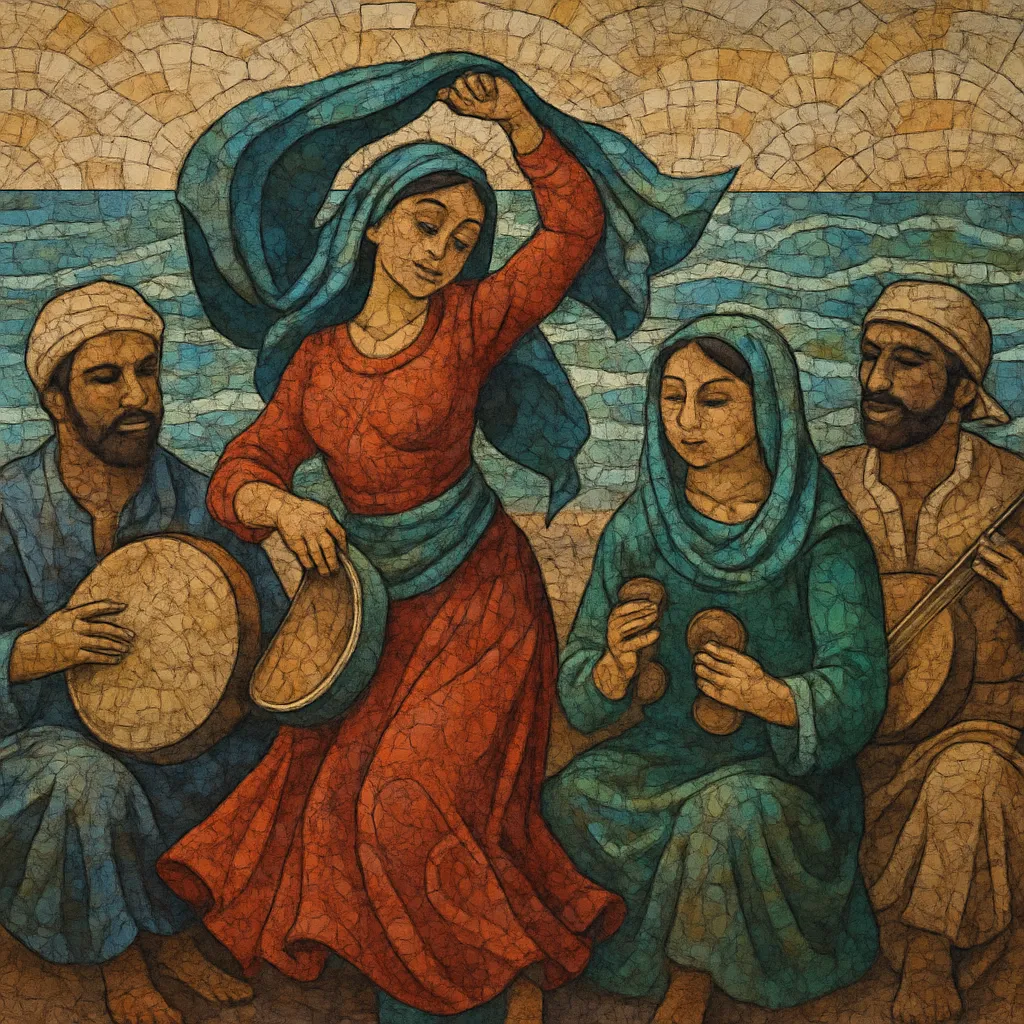Bandari is a lively, dance-oriented popular/folk style from the southern coasts of Iran along the Persian Gulf. Its hallmark is a driving 6/8 (bandari) groove, accented handclaps, and exuberant call-and-response vocals.
The sound is shaped by centuries of maritime exchange between southern Iran, the Arabian Peninsula, and East Africa. Traditional instruments such as ney-anban (Iranian bagpipe), ney-jofti (double reed pipe), sorna (shawm), and a family of frame and barrel drums (dammam, dohol, tombak, kesser) sit comfortably alongside electric bass, keyboards, and drum kits in modern arrangements. Melodically, Bandari navigates between Persian dastgāh aesthetics and Arabic maqām flavors (often Bayātī and Ḥijāz), yielding festive, modal tunes designed for weddings and communal celebrations.
Today, Bandari exists both as a rooted regional music and as a broad dance-pop sensibility within Persian popular music, where its signature 6/8 swing powers countless party anthems.
Bandari (literally “of the port”) grew out of the coastal cultures of Bushehr, Hormozgān (including Bandar Abbas), and Khuzestan. From the late 19th to early 20th century, sailors, traders, and migrant communities carried rhythms, instruments, and songs between southern Iran, the Arabian Peninsula, and East Africa. This exchange seeded Bandari’s buoyant 6/8 beat, its call-and-response singing, and the use of instruments like the ney-anban and sorna alongside powerful drum ensembles.
Through the mid-1900s, Bandari took on a more defined regional identity at weddings, street festivities, and local gatherings. Urbanization and radio spread its songs beyond port cities. The music absorbed Persian pop harmonies and instrumentation while keeping its distinctive rhythmic feel and festive lyrics about love, the sea, and everyday life.
After the late 20th century, Persian pop artists in Iran and the diaspora popularized the “bandari beat” as a dance-pop template. Synths, drum machines, and electric bass reinforced the 6/8 swing, while the celebratory spirit remained intact. Meanwhile, regional ensembles kept the acoustic tradition alive, featuring virtuoso players on ney-anban, ney-jofti, dammam, and dohol.
Today, Bandari thrives in two parallel streams: a rooted, regionally grounded performance tradition, and a modern pop/fusion approach that adapts the groove to club-friendly production. Both expressions highlight the genre’s cross-cultural DNA and its enduring role in communal celebration.


